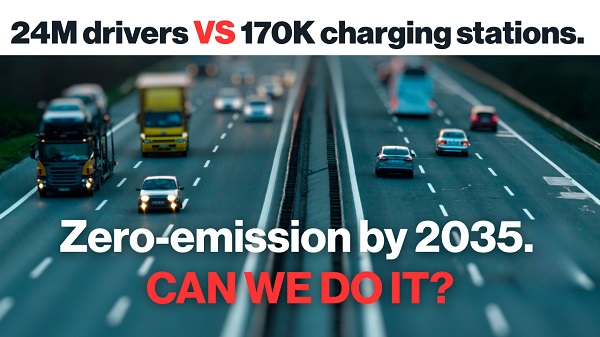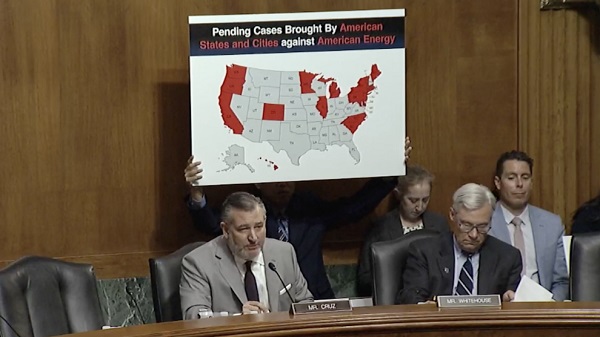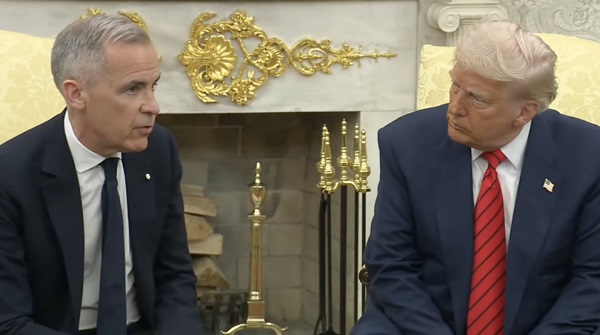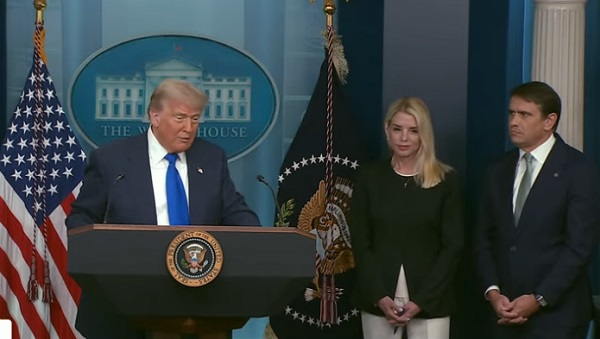Business
Base Policies on Reality – Not Myths, Models, Misinformation and Fearmongering
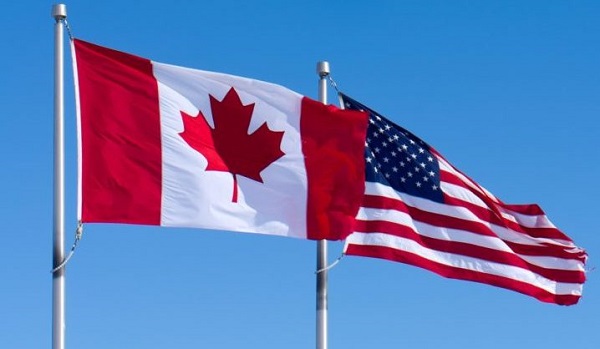
From the Frontier Centre for Public Policy
Donald Trump and JD Vance have a mandate on energy, economic, immigration and other issues that won them 50% of popular, 58% of electoral and 82% of US county votes.
On January 20 they will begin tackling the numerous problems bequeathed them by the Biden-Harris Administration and Washington Deep State: illegal immigration of criminals, terrorists and opportunists; outrageous government spending by bloated federal agencies; wars and crises across the globe; and federal and state politicians and bureaucrats determined to slow or stymie their every move.
Mr. Trump will let the DOGE out, to cut government waste. Pundits and political pros are offering advice across the board. My suggestions center on the “climate crisis” and the destructive policies it has justified.
1. First and foremost, withdraw the United States from the 2015 Paris climate straitjacket. Its terms and subsequent agreements require that the USA and other industrialized nations switch from fossil fuels to “clean renewable” energy and de-modernize agricultural and other practices, to eliminate “greenhouse gas” (GHG) emissions. That would bring blackouts, de-industrialization and job losses.
It would also mean now-rich nations must pay developing countries $300 billion per year for climate damage “compensation” and renewable energy financing. But China, India and other developing countries need not cut emissions and will continue using coal, oil and natural gas in ever-increasing quantities, to modernize, create vibrant economies and lift more people out of poverty. That would mean even zero fossil fuel use by Western nations would not reduce global atmospheric GHG levels at all.
Better yet, send the Paris document to Congress for Article II Senate advice and two-thirds consent. President Obama’s sly move of calling this accord a mere “agreement” that required no Senate “treaty” review cannot be countenanced. Paris was among the most far-reaching, impactful agreements in US history. It affects our energy, economy, jobs, living standards, healthcare, national security and more. It’s a treaty and should be treated as such.
2. Equally important, eliminate the institutionalized junk science, assertions and fearmongering that fossil fuel use has caused an existential climate crisis for people and planet. Begin by re-examining the 2009 Obama Environmental Protection Agency “Endangerment Finding” that carbon dioxide “pollution” threatens the American people’s health and welfare.
Fossil fuels provide 80% of America’s energy; raw materials for thousands of petrochemical products; and the foundation of our economy, health and welfare. Their emissions certainly contribute to the 0.04% CO2 in Earth’s atmosphere, but this miracle molecule enables and spurs plant growth, thereby feeding the animal kingdom and making nearly all life possible.
EPA’s convoluted finding defied science and reality. It allowed the Obama and Biden Administrations to justify biased climate “research,” anti-fossil fuel regulations, sprawling wind and solar installations, and the transformation of America’s entire energy system and economy.
The Endangerment Decision was likely the most “major federal action” in US history, yet it has no real statutory basis. It clearly defies the Supreme Court’s decisions in West Virginia v. EPA, Chevron v. Natural Resources Defense Council and Loper Bright Enterprises, Inc., v. Raimondo.
EPA Administrator Lee Zeldin should direct the agency to formally and publicly reexamine the secretive process that EPA employed to ensure its “endangerment” decision – with no contrarian science, evidence, questions or public hearings permitted to challenge its preordained edict. A fair, balanced, scientific review would demolish the faulty Finding and bring the agency into compliance with SCOTUS rulings.
The President-elect’s appointment of energy and environmental “czars” and National Energy Council will build on those important steps, help restore reality and common sense to America’s energy and climate policies, rein in other Biden-era regulations and executive actions, and advance Mr. Trump’s promise of US energy dominance and economic resurgence.
Other actions the new Administration and Congress should take include the following.
3. Utilize the Congressional Review Act to reverse eleventh-hour Biden-Harris regulatory sprees – such as its ban on further coal leasing in the Powder River Basin.
4. Open all US non-National-Park areas for no/low impact evaluation and exploration, to identify prospects warranting more detailed assessments for critically needed metals and minerals. Most of these public land areas were deliberately made off-limits to such evaluations by Congress, courts and the Deep State, making it impossible to weigh surface values against potential for world-class subsurface deposits.
China’s recent ban on exports of several vital metals and minerals underscores yet again why America must not rely on adversaries for raw materials critical for US defense, aerospace, battery, AI, wind, solar and other industries – especially when those materials could be found and developed in America, under the world’s best pollution control and environmental protection rules, technologies and practices.
5. Reopen the Delaware-sized “coastal plain” of Alaska’s South-Carolina-sized Arctic National Wildlife Refuge for oil and gas leasing, exploration and drilling. Congressional legislation in 2017 explicitly allowed those activities, but President Biden unilaterally cancelled all leases and permits in 2023.
6. Require that applicants for climate change research and modeling grants demonstrate that their previous models and studies have been confirmed by actual temperature, drought and extreme weather data and evidence; and provide computer codes and analyses so that reviewers can view and evaluate their work.
7. Define “sustainability” to reflect complete global life-cycle raw material requirements, mining and processing needs and impacts, energy required to produce raw materials and manufacture energy and other systems, and land, air and water pollution resulting from all those activities. This will ensure that wind, solar, battery, electric vehicle and other technologies are not classified as “clean, renewable and sustainable” merely because they don’t emit CO2 or pollution after they start operating.
8. End subsidies and fast-track permitting for wind and solar installations – especially offshore wind, where raw material requirements and costs are many times higher than for onshore turbines and far more excessive than that for combined-cycle gas generators.
9. Require that wind and solar projects, and associated backup battery and transmission line projects, meet the same environmental review standards and requirements as required for oil, gas, coal and metals mining, and nuclear projects, regarding local, regional and global air and water pollution, land and habitat destruction, wildlife disturbance and loss, and post-project equipment removal and land reclamation.
Even better, cancel the entire offshore wind program. Its electricity is weather-dependent and ultra-expensive, threatens wildlife and fisheries, and requires unjustifiable amounts of raw materials.
10. Expand and streamline programs to bring new nuclear power plants online, especially small modular reactors – to meet rapidly expanding needs for abundant, reliable, affordable electricity for data centers, artificial intelligence, and increasingly electrified households, technologies and industries.
11. Terminate Diversity Equity Inclusion, Environment Social Governance, and Environmental and Climate Justice programs, offices and funding. They only serve as twisted justifications for arbitrarily selecting preferred companies and communities that are often less qualified to serve public health and safety.
There is much more to be done. But this is a solid beginning for reducing or eliminating needless, excessive and harmful pseudo science, grants, policies, practices and regulations – and restoring government of, by and for the People.
Paul Driessen is senior policy analyst for the Committee For A Constructive Tomorrow and author of books and articles on energy, environment, climate and human rights issues.
Business
Dallas mayor invites NYers to first ‘sanctuary city from socialism’

From The Center Square
By
After the self-described socialist Zohran Mamdani won the Democratic primary for mayor in New York, Dallas Mayor Eric Johnson invited New Yorkers and others to move to Dallas.
Mamdani has vowed to implement a wide range of tax increases on corporations and property and to “shift the tax burden” to “richer and whiter neighborhoods.”
New York businesses and individuals have already been relocating to states like Texas, which has no corporate or personal income taxes.
Johnson, a Black mayor and former Democrat, switched parties to become a Republican in 2023 after opposing a city council tax hike, The Center Square reported.
“Dear Concerned New York City Resident or Business Owner: Don’t panic,” Johnson said. “Just move to Dallas, where we strongly support our police, value our partners in the business community, embrace free markets, shun excessive regulation, and protect the American Dream!”
Fortune 500 companies and others in recent years continue to relocate their headquarters to Dallas; it’s also home to the new Texas Stock Exchange (TXSE). The TXSE will provide an alternative to the New York Stock Exchange and Nasdaq and there are already more finance professionals in Texas than in New York, TXSE Group Inc. founder and CEO James Lee argues.
From 2020-2023, the Dallas-Fort Worth-Arlington MSA reported the greatest percentage of growth in the country of 34%, The Center Square reported.
Johnson on Thursday continued his invitation to New Yorkers and others living in “socialist” sanctuary cities, saying on social media, “If your city is (or is about to be) a sanctuary for criminals, mayhem, job-killing regulations, and failed socialist experiments, I have a modest invitation for you: MOVE TO DALLAS. You can call us the nation’s first official ‘Sanctuary City from Socialism.’”
“We value free enterprise, law and order, and our first responders. Common sense and the American Dream still reside here. We have all your big-city comforts and conveniences without the suffocating vice grip of government bureaucrats.”
As many Democratic-led cities joined a movement to defund their police departments, Johnson prioritized police funding and supporting law and order.
“Back in the 1800s, people moving to Texas for greater opportunities would etch ‘GTT’ for ‘Gone to Texas’ on their doors moving to the Mexican colony of Tejas,” Johnson continued, referring to Americans who moved to the Mexican colony of Tejas to acquire land grants from the Mexican government.
“If you’re a New Yorker heading to Dallas, maybe try ‘GTD’ to let fellow lovers of law and order know where you’ve gone,” Johnson said.
Modern-day GTT movers, including a large number of New Yorkers, cite high personal income taxes, high property taxes, high costs of living, high crime, and other factors as their reasons for leaving their states and moving to Texas, according to multiple reports over the last few years.
In response to Johnson’s invitation, Gov. Greg Abbott said, “Dallas is the first self-declared “Sanctuary City from Socialism. The State of Texas will provide whatever support is needed to fulfill that mission.”
The governor has already been doing this by signing pro-business bills into law and awarding Texas Enterprise Grants to businesses that relocate or expand operations in Texas, many of which are doing so in the Dallas area.
“Texas truly is the Best State for Business and stands as a model for the nation,” Abbott said. “Freedom is a magnet, and Texas offers entrepreneurs and hardworking Texans the freedom to succeed. When choosing where to relocate or expand their businesses, more innovative industry leaders recognize the competitive advantages found only in Texas. The nation’s leading CEOs continually cite our pro-growth economic policies – with no corporate income tax and no personal income tax – along with our young, skilled, diverse, and growing workforce, easy access to global markets, robust infrastructure, and predictable business-friendly regulations.”
Business
National dental program likely more costly than advertised

From the Fraser Institute
By Matthew Lau
At the beginning of June, the Canadian Dental Care Plan expanded to include all eligible adults. To be eligible, you must: not have access to dental insurance, have filed your 2024 tax return in Canada, have an adjusted family net income under $90,000, and be a Canadian resident for tax purposes.
As a result, millions more Canadians will be able to access certain dental services at reduced—or no—out-of-pocket costs, as government shoves the costs onto the backs of taxpayers. The first half of the proposition, accessing services at reduced or no out-of-pocket costs, is always popular; the second half, paying higher taxes, is less so.
A Leger poll conducted in 2022 found 72 per cent of Canadians supported a national dental program for Canadians with family incomes up to $90,000—but when asked whether they would support the program if it’s paid for by an increase in the sales tax, support fell to 42 per cent. The taxpayer burden is considerable; when first announced two years ago, the estimated price tag was $13 billion over five years, and then $4.4 billion ongoing.
Already, there are signs the final cost to taxpayers will far exceed these estimates. Dr. Maneesh Jain, the immediate past-president of the Ontario Dental Association, has pointed out that according to Health Canada the average patient saved more than $850 in out-of-pocket costs in the program’s first year. However, the Trudeau government’s initial projections in the 2023 federal budget amounted to $280 per eligible Canadian per year.
Not all eligible Canadians will necessarily access dental services every year, but the massive gap between $850 and $280 suggests the initial price tag may well have understated taxpayer costs—a habit of the federal government, which over the past decade has routinely spent above its initial projections and consistently revises its spending estimates higher with each fiscal update.
To make matters worse there are also significant administrative costs. According to a story in Canadian Affairs, “Dental associations across Canada are flagging concerns with the plan’s structure and sustainability. They say the Canadian Dental Care Plan imposes significant administrative burdens on dentists, and that the majority of eligible patients are being denied care for complex dental treatments.”
Determining eligibility and coverage is a huge burden. Canadians must first apply through the government portal, then wait weeks for Sun Life (the insurer selected by the federal government) to confirm their eligibility and coverage. Unless dentists refuse to provide treatment until they have that confirmation, they or their staff must sometimes chase down patients after the fact for any co-pay or fees not covered.
Moreover, family income determines coverage eligibility, but even if patients are enrolled in the government program, dentists may not be able to access this information quickly. This leaves dentists in what Dr. Hans Herchen, president of the Alberta Dental Association, describes as the “very awkward spot” of having to verify their patients’ family income.
Dentists must also try to explain the program, which features high rejection rates, to patients. According to Dr. Anita Gartner, president of the British Columbia Dental Association, more than half of applications for complex treatment are rejected without explanation. This reduces trust in the government program.
Finally, the program creates “moral hazard” where people are encouraged to take riskier behaviour because they do not bear the full costs. For example, while we can significantly curtail tooth decay by diligent toothbrushing and flossing, people might be encouraged to neglect these activities if their dental services are paid by taxpayers instead of out-of-pocket. It’s a principle of basic economics that socializing costs will encourage people to incur higher costs than is really appropriate (see Canada’s health-care system).
At a projected ongoing cost of $4.4 billion to taxpayers, the newly expanded national dental program is already not cheap. Alas, not only may the true taxpayer cost be much higher than this initial projection, but like many other government initiatives, the dental program already seems to be more costly than initially advertised.
-

 Agriculture2 days ago
Agriculture2 days agoCanada’s supply management system is failing consumers
-

 Alberta1 day ago
Alberta1 day agoCOVID mandates protester in Canada released on bail after over 2 years in jail
-

 armed forces23 hours ago
armed forces23 hours agoCanada’s Military Can’t Be Fixed With Cash Alone
-

 International1 day ago
International1 day agoTrump transportation secretary tells governors to remove ‘rainbow crosswalks’
-
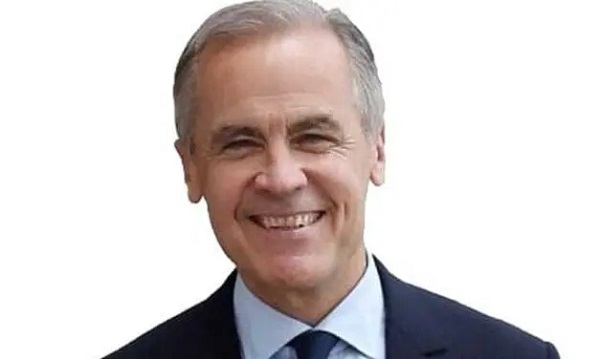
 Business1 day ago
Business1 day agoCarney’s spending makes Trudeau look like a cheapskate
-

 Business24 hours ago
Business24 hours agoCanada’s loyalty to globalism is bleeding our economy dry
-
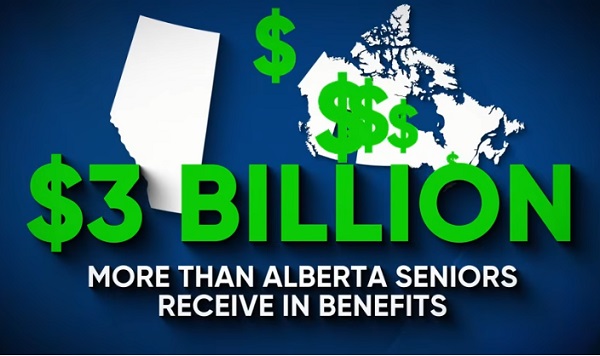
 Alberta23 hours ago
Alberta23 hours agoAlberta Next: Alberta Pension Plan
-

 Economy2 days ago
Economy2 days agoTrump opens door to Iranian oil exports

